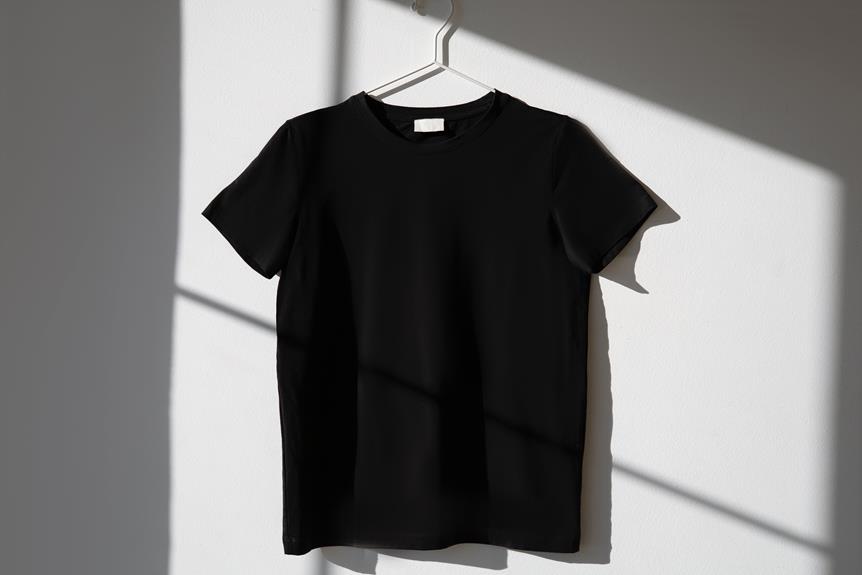Ever wondered where the exquisite clothing of the Harappan civilization originated?
Delving into the world of ancient textiles, you'll uncover fascinating insights. The Indus Valley trade routes played a pivotal role in shaping the clothing styles of the Harappans.
Their garments were crafted using a variety of materials and techniques, showcasing their advanced craftsmanship.
The cultural significance of Harappan attire offers a window into the beliefs and values of this ancient civilization. By comparing Harappan garments with those of contemporary cultures, you'll gain a deeper understanding of the evolution of clothing.
Get ready to unravel the mystery of Harappan clothing and embark on a journey through time and culture.
Key Takeaways
- Harappan clothing materials included cotton, wool, and silk, and techniques such as spinning raw materials into yarn and dyeing with natural substances were used.
- Trade routes, both maritime and overland, played a significant role in the exchange of practices, technologies, and artistic influences, impacting clothing styles and materials.
- Harappan attire had cultural significance, denoting social hierarchy, reflecting cultural identity and traditions, showcasing artistic expression and craftsmanship, and possibly holding symbolic meanings.
- Comparing Harappan garments with contemporary cultures reveals the influence of Harappan civilization on neighboring regions and the enduring impact of cultural influences on fashion.
Ancient Textiles: Unraveling the Mystery
You might wonder how ancient textiles from the Harappan civilization were created and what materials were used to weave them.
The textile production of the Harappan civilization was an advanced and intricate process. They used materials such as cotton, wool, and silk to weave their garments.
The evolution of garments during this time was remarkable, with the Harappans being among the first to use cotton for clothing.
The production of textiles involved spinning the raw materials into yarn, which was then dyed using natural substances like indigo and madder.
Skilled artisans then used a variety of weaving techniques to create intricate patterns and designs, showcasing their craftsmanship and attention to detail.
The garments produced weren't only practical but also held cultural and symbolic significance within the society.
As you delve into the world of ancient textiles, the complexities of Harappan textile production and the evolution of garments become more apparent, shedding light on the sophistication of this ancient civilization.
Indus Valley Trade Routes and Influences
The Indus Valley trade routes and influences can be traced back to the extensive network of commerce and cultural exchange that characterized the Harappan civilization. The trade routes of the Indus Valley civilization were a vital component of their economic and cultural prosperity. Here are some key points about the trade influences in the Indus Valley:
- Maritime Trade: The civilization's strategic location along the Arabian Sea enabled extensive maritime trade with regions such as Mesopotamia, present-day Oman, and Bahrain, facilitating the exchange of goods and ideas.
- Overland Trade: The trade routes through the Khyber Pass connected the civilization to Central Asia, facilitating the exchange of goods such as lapis lazuli and other precious stones.
- Cultural Exchange: The trade routes not only facilitated the exchange of goods but also led to the diffusion of cultural practices, technologies, and artistic influences across different regions.
- Influence on Clothing: The trade routes played a significant role in shaping the clothing styles and materials utilized in the Indus Valley civilization, as evidenced by the presence of textiles such as cotton and wool from various trade partners.
The Indus Valley trade routes and influences were pivotal in shaping the civilization's economic prosperity and cultural development.
Harappan Clothing Materials and Techniques
Harappan clothing materials and techniques encompass a diverse array of fabrics and weaving methods. Cloth production in the Harappan civilization was a sophisticated process involving the spinning of cotton and the weaving of fabrics using advanced looms.
The people of the Indus Valley were adept at crafting fine textiles from cotton, which was a primary material for their clothing. Additionally, they utilized techniques such as dyeing to impart vibrant colors to their garments. The dyeing techniques included the use of natural dyes derived from plants and minerals, showcasing their knowledge of chemistry and botany.
The intricate patterns and designs found on Harappan artifacts suggest that they were skilled in using various methods such as resist dyeing and block printing. Moreover, evidence of mordant dyeing indicates their proficiency in creating colorfast and long-lasting dyes.
The utilization of such advanced techniques in cloth production and dyeing showcases the sophistication and mastery of the Harappan civilization in creating textiles for their clothing.
Cultural Significance of Harappan Attire
Cultural significance of Harappan attire is evident in the intricate patterns and designs found on artifacts, reflecting the skilled use of various dyeing and printing techniques. The attire of the Harappan civilization played a pivotal role in cultural evolution and societal status, exemplifying the sophistication and distinctiveness of their society. The clothing not only served as a means of protection from the elements but also communicated a wealth of information about the wearer's social standing, role in the community, and possibly even their beliefs.
- Social Hierarchy: The attire likely denoted the social hierarchy, distinguishing individuals based on their status within the community.
- Cultural Identity: The unique motifs and designs showcased on the clothing items were indicative of the cultural identity and traditions of the Harappan people.
- Artistic Expression: The intricate designs and patterns reflected the artistic expression and craftsmanship of the civilization, symbolizing their appreciation for beauty and aesthetics.
- Symbolism: The attire possibly carried symbolic meanings, representing spiritual or ritualistic beliefs, further emphasizing the cultural and societal significance of Harappan clothing.
Understanding the cultural significance of Harappan attire provides valuable insights into the societal dynamics and values of this ancient civilization.
Comparing Harappan Garments With Contemporary Cultures
When examining Harappan garments in comparison to contemporary cultures, you can observe the evolution of clothing styles and their impact on societal norms and expressions.
Cultural influences play a significant role in shaping the way people dress, and this is evident when comparing Harappan attire with that of modern cultures. The Harappan civilization, with its advanced textile production, influenced not only its own clothing styles but also had an impact on neighboring regions.
Similarly, contemporary cultures are influenced by a myriad of factors, including historical traditions, globalization, and technological advancements, all of which contribute to the diversity in clothing styles and choices.
The intricate designs and use of specific materials in Harappan clothing reflect the cultural and societal values of that time. In comparison, contemporary cultures continue to showcase the influence of cultural diversity on clothing, with various regions and communities expressing their unique identities through traditional attire.
Understanding the comparisons between Harappan garments and contemporary cultures provides valuable insights into the continuous evolution of clothing styles and the enduring impact of cultural influences on fashion.
Frequently Asked Questions
What Were the Specific Weaving Techniques Used by the Harappans to Create Their Clothing?
To create their clothing, the Harappans used specific weaving techniques and advanced textile development. They were skilled in intricate methods of weaving, including plain weave, twill weave, and complex patterns like brocade.
Did Harappan Clothing Have Any Religious or Ceremonial Significance?
Harappan clothing held significant religious symbolism and was integral to ceremonial rituals. The intricate designs and use of specific materials reflected a deep connection to spiritual beliefs and played a central role in religious practices and ceremonial events.
How Did the Climate and Geography of the Region Impact the Types of Clothing Worn by the Harappans?
The environment and geography directly impacted the types of clothing worn by the Harappans. The availability of clothing materials, cultural influences, and textile production were influenced by the climate and geography, reflecting clothing symbolism and social hierarchy in dress.
Were There Any Specific Dyes or Color Palettes Commonly Used in Harappan Clothing?
Natural dyes were commonly used in Harappan clothing, reflecting their connection to the environment. Color symbolism was significant, with specific colors holding cultural and religious meaning. These elements added depth and significance to their clothing practices.
What Evidence Do We Have of Social Status or Hierarchy Being Reflected in Harappan Clothing?
Evidence of social hierarchy in Harappan clothing is seen through distinctive textiles and adornments. Elaborate craftsmanship and rare materials were reserved for higher status individuals, reflecting their elevated position within the society.
- How Does Chamois Fabric Feel Compared to Other Fabrics? - June 22, 2025
- Chamois Fabric Vs Flannel: Key Differences Explained - June 22, 2025
- Top Manufacturers of Chamois Fabric: A Detailed List - June 22, 2025






